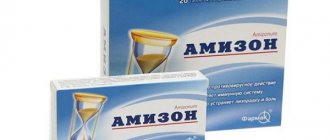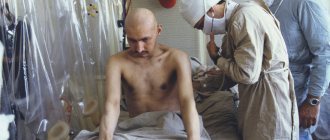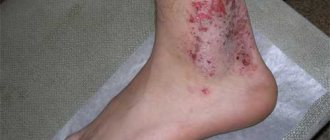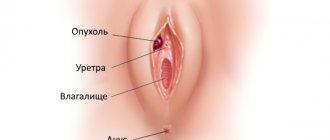Adnexitis is a disease of the appendages caused by exposure to various infectious microorganisms. This disease comes in two types: acute and chronic adnexitis. Chronic adnexitis is the most widespread gynecological disease, which is characterized by frequent relapses.
Adnexitis - inflammation of the appendages caused by exposure to pathogens
Symptoms of adnexitis
The degree of manifestation of the disease directly depends on the general condition of the human body and the level of his immunity. As a rule, acute adnexitis manifests itself in the form of a common cold, which is characterized by such common symptoms as high body temperature, vomiting, headaches, malaise, and chills. In addition, it is accompanied by a number of additional specific symptoms - nagging pain in the lower abdomen, which often radiates to the rectum, lower back and thigh. In addition, the patient becomes more nervous and irritable.
Pain with adnexitis may be accompanied by discharge that is mucous, serous or purulent in nature. They often cause itching and irritation of the external genital organs.
Chronic adnexitis is a consequence of incompletely cured acute adnexitis. During its exacerbation, the patient’s general level of well-being worsens, weakness appears, and body temperature rises to 37-38 degrees. If such symptoms appear, it is necessary to immediately begin treatment for chronic adnexitis in order to exclude the possibility of further development of the disease.
During an exacerbation of adnexitis, many women experience sexual dysfunction and decreased libido. This also includes dysfunction of the digestive organs, accompanied by various colics and urinary disorders.
The main symptoms of chronic adnexitis include constant “dull” pain. They can become stronger during menstruation, sexual intercourse, hypothermia, stress and other similar physical activities. Often the main problem with adnexitis is a disruption of the menstrual cycle, which is accompanied by too weak or too intense bleeding. With prolonged chronic adnexitis, the likelihood of infertility increases. As a rule, this is due to obstruction of the uterine tubes, which occurs as a result of the soldering of the tube during prolonged inflammation.
Treatment methods for the disease depending on the stage
Treatment of adnexitis is determined by the nature
of this disease (chronic, acute). And also on the specific pathogen, the presence of concomitant pathological conditions, and the severity of the main clinical symptoms.
In all cases, it is necessary to consult a doctor , because self-medication guarantees only temporary improvement, but the inflammation does not go away and takes on a protracted, chronic course with quite serious consequences.
Acute therapy is always carried out in a hospital. Bed rest is prescribed and cold is applied to the lower abdomen for one to two days. In addition to all this, sedatives (leonwort tincture), antihistamines (diphenhydramine), vitamins (ascorbic acid, rutin), and a special diet are indicated.
Antibiotics with a long decay period also play an important role. Their type is determined depending on the specific pathogen, the dosage is selected in such a way as to ensure maximum concentration in the pathological focus.
The effectiveness of therapy for adnexitis can be increased by performing laparoscopy - this procedure allows for puncture or removal of pathological formations.
To treat chronic adnexitis, drug and non-drug therapy is used, taking into account the neglect of the pathological process and its other clinical features.
During the period of remission, in order to eliminate the pain symptom in the lower abdomen, ultrasound therapy, water and mud therapy, and acupuncture are performed. Antibiotics are prescribed during an exacerbation, if competent antibacterial therapy has not been carried out in the acute stage. They are also used in the application of techniques that activate metabolism and blood supply, since relapses of acute inflammation are not excluded.
Surgical intervention is performed only for certain indications (mass formations, severe adhesions, frequent exacerbations). It is preferable to carry out organ-preserving operations so that reproductive function is not hampered or excluded in the future. But in some cases, removal of the uterus, ovaries, and fallopian tubes is not excluded.
To improve the results, therapy for chronic adnexitis is best carried out in special resort conditions, combining all of the above methods with massage, exercise therapy, consultations with a psychotherapist, and diet.
Treatment with antibiotics
The use of antibiotics is one of the most important measures in treatment, since this disease is caused by microbes. The most commonly used drugs are kefozole, gentamicin, amoxicillin or ceframesine. If the disease is severe, azithromycin or doxycycline is prescribed.
In mild cases, antibiotics may be given orally. In the rest - only intravenously or intramuscularly. Antibiotic therapy should be combined with the use of drugs from other pharmacological groups, physiotherapy and vitamins. Chronic adnexitis requires long-term therapy under medical supervision .
Treatment with candles
For adnexitis, suppositories are used as a means for local treatment with antibiotics. This allows you to increase the effectiveness of therapy. In some cases, they are intended to relieve severe pain. The most commonly used drugs are: movalis, fluamisin, indomethacin, diclofenac, voltaren.
During pregnancy, a woman faces many dangers, some diseases are not noticeable until they deal a decisive blow, find out how the diagnosis of gestosis is carried out and eliminate this problem in advance.
Today, the causes of endometriosis are not clear, but doctors identify several features that affect the development of the disease. READ MORE
Pain during breastfeeding haunts many mothers; expressing with a breast pump is a modern way out of the situation.
Types of disease
There are several types of adnexitis - right-sided, bilateral and left-sided adnexitis. During the development of the disease, several stages are distinguished - the stage of endometritis without irritation, with irritation of the peritoneum, the formation of an inflammatory conglomerate and abscess formation.
The inflammatory process causes swelling and the appearance of purulent plaque
Right-sided adnexitis is differentiated from acute appendicitis. The whole point is that the symptoms that appear during the acute period are almost identical to the symptoms that occur during the prehospital stage of appendicitis, so it is almost impossible to accurately determine the diagnosis. Therefore, during the development of the acute form of the disease, it is first necessary to consult a gynecologist, and then a surgeon, in case of denial of adnexitis.
There is also bilateral adnexitis, the duration of exacerbation of which directly depends on how the patient is observed by the attending physician and monitors her health. If the prescribed course of treatment is carried out in full and in compliance with all deadlines, then bilateral adnexitis will be in remission for quite a long time, otherwise this disease can deform the uterine appendages, which can cause infertility.
Causes of adnexitis
The cause of adnexitis is infectious agents (gonococcus, Escherichia coli, streptococcus, staphylococcus). Their effect on the human body is primarily provoked by a decrease in the level of immunity. Microorganisms that cause adnexitis are constantly present in a woman’s body and are activated only if immunity is reduced.
The provoking factors for the appearance of adnexitis are unprotected sex, as well as sexual activity during menstruation, hypothermia, poor personal hygiene, constipation, endometriosis, chronic infections, overwork and stress, as well as diseases associated with the gastrointestinal tract. In turn, abortions and diagnostic uterine curettage are provocateurs for further malignant development of adnexitis.
Adnexitis infection can spread in different ways
Pathogens can enter a woman’s body in various ways, namely: • ascending; • downward; • hematogenous. In case of acute manifestation of adnexitis, treatment must be prescribed immediately. First you need to see a doctor. In no case should you take painkillers before a medical examination, as they can distort the real picture of the disease, complicate the diagnosis and thereby provoke further malignant development of complications. To minimize the pain that appears, you need to apply a cold compress to the suprapubic part. Warming the lower abdomen during exacerbation of adnexitis is prohibited, as this may cause an increase in the spread of infectious microorganisms.
Pathology of the uterine appendages on the right: what are the causes
The main factor in the onset of inflammation is microbes. Adnexitis is caused by specific (gonococci, trichomonas, chlamydia, mycoplasma) or nonspecific microorganisms (ureaplasma, staphylococcus, streptococcus, escherichia, enterococcus). Infection in the right appendages of the uterus occurs ascending from the vagina or descending from the right intestines, biliary or urinary system. Contributing factors are:
- acute or complicated appendicitis;
- acute or chronic cholecystitis;
- right-sided pyelonephritis;
- absence or obstruction of the left fallopian tube;
- frequent hypothermia due to decreased immunity;
- gynecological examinations or operations involving procedures in the uterus or pelvis;
- varicose veins on the right side of the pelvic organs.
For right-sided adnexitis, infection is more common after surgery for appendicitis or cholecystitis. However, a typical option is quite possible - microbes reach the right side of the small pelvis in an ascending way.
Diagnostics
Adnexitis can be diagnosed based on the results of the diagnosis, as well as on the basis of patient complaints. Diagnosis of adnexitis includes examination of the vagina, cervix, smears of the urethra, microbiological examination of the abdominal cavity and the contents of the fallopian tubes, ultrasound.
Laparoscopy is one of the most effective methods for diagnosing adnexitis
The most effective method for diagnosing adnexitis is laparoscopy. Its essence consists in identifying purulent formations, as well as examining the fallopian tubes with further implementation of intracavitary treatment for inflammation of the genital appendages. To determine the patency of the fallopian tubes and the level of the pathological process during adnexitis, X-ray diagnostics of the uterus and its appendages is carried out with the integration of a contrast agent.
In case of menstrual irregularities, a series of functional tests are performed - stretching the cervical mucus, determining pupil symptoms and measuring temperature. In addition, the presence of adnexitis can be determined based on the results of a blood test.
Treatment of adnexitis
Many people wonder how to treat adnexitis? When treating an acute form, the patient must be hospitalized. First of all, she needs psychological and physical rest, the optimal amount of fluid for her age and weight, a light diet and careful monitoring of discharge. During the treatment of adnexitis, the doctor prescribes desensitizing, anti-inflammatory and analgesic medications. But the main method of treating the disease is taking antibiotics for adnexitis, preferably those with a long half-life.
Antibiotics most effectively fight adnexitis
In severe stages of the disease, which can cause further development of sepsis, it is necessary to take antibiotics in various combinations, as well as medications for a bactericidal effect on the anaerobic flora. In order to reduce intoxication of the body during adnexitis, infusion treatment is carried out. If the disease is purulent, as mentioned above, laparoscopy is performed, during which the pus is removed and the painful area is irrigated with antibiotics and antiseptics. Acute adnexitis is treated by puncture of the vaginal vaults, as well as local administration of antibiotic drugs. If the disease has already reached full speed, and conservative treatment is not advisable, doctors resort to surgical intervention, removing the inflamed appendages.
After the threshold of acute symptoms of adnexitis has been passed, physical therapy and biostimulants are usually prescribed. Such techniques help reduce tissue exudation, have a resolving and analgesic effect, and also reduce the likelihood of adhesions.
If treatment for acute adnexitis is not started in time, it can develop into a chronic disease, which will take a long time to treat. The chronic form of adnexitis can also be accompanied by infertility and endometriosis, and frequent relapses can cause neuroses, decreased levels of ability to work and sexual desire, which, in turn, often become causes of conflicts in the family of a sick woman.
Treatment of chronic adnexitis is identical to the treatment of acute adnexitis. The most effective methods are ozokerite (therapeutic mud), paraffin treatment, vaginal irrigation with sulfide-mineral, sodium chloride waters, and, of course, spa treatment. In addition, for this disease, a special diet is prescribed. If you have adnexitis, you need to eat a rational and balanced diet, and most importantly, do it regularly. Thanks to this, the body’s resistance to various infectious pathogens improves.
During the acute stages of adnexitis, it is necessary to adhere to a hypoallergenic diet, according to which egg whites, mushrooms, sweets and other allergenic products are excluded from the patient’s diet. The amount of salts with carbohydrates also comes under control. At the same time, it is strictly forbidden to eat fried food, but only boiled or stewed food. If adnexitis is in remission, it is not necessary to adhere to a strict diet.
Diet
Prescribing a diet for acute or subacute salpingoophoritis is important in terms of increasing the body’s resistance to infection and improving metabolic processes in the source of inflammation. The diet should be hypoallergenic. This means that the sick person cannot eat egg whites, sweets, mushrooms, chocolate, carbohydrates in limited quantities, and table salt. It is better to eat food stewed or boiled.
In case of adnexitis without exacerbations, a diet is not established in principle. All you need is a balanced and rational diet. Vitamins are required.
Disease prevention
Prevention of adnexitis is based on personal hygiene
Prevention of adnexitis should primarily be carried out after an abortion, as well as for those who have been diagnosed with STIs, women who have undergone genital surgery and those who use intrauterine devices. To the extent possible, the categories of women described above should avoid the causes that provoke the appearance of symptoms of acute adnexitis and repeated chronic inflammation. This includes alcohol abuse and fatty foods, hypothermia, stress and sexually transmitted infections. It is not recommended to let your feet get wet or freeze (this is especially true during the menstrual period). After swimming in ponds or pools, you must immediately put on a dry swimsuit so as not to provoke an exacerbation or the appearance of adnexitis.
We should also not forget about modern methods of contraception. If they do not help, it is necessary to carry out a non-traumatic abortion - medical termination of pregnancy. To prevent the occurrence of adnexitis, it is strongly recommended to go for a gynecological examination every six months.
Also, to prevent adnexitis, it is necessary to follow basic personal hygiene standards. It is recommended to wash the external genitalia daily under running warm water to prevent intestinal infections. During the menstrual period, this procedure must be repeated at least twice a day, as well as promptly change pads and stop using tampons. Underwear for women prone to adnexitis should be cotton, since synthetics can provoke the appearance of inflammatory processes in the external reproductive organs and also cause thrush. When bathing, you need to make sure that soap suds do not get into the vagina, otherwise it can wash away the beneficial microflora. It is strictly forbidden to use other people's towels, washcloths, soaps and other bath accessories of a personal nature.
Regular visits to the gynecologist will help identify the disease in the early stages
During the hot and cold periods of the year, women are prohibited from sitting on stone steps and damp earth. It is also not recommended to wear tight clothing, as it impairs blood circulation and promotes stagnation of infection, which causes adnexitis. Women should immediately seek help from gynecologists if they experience the first pain in the lower abdomen, itching and burning in the reproductive organs, as well as the appearance of warty formations.
And in conclusion, it must be said that to prevent adnexitis, you need to constantly see a doctor, follow all his recommendations, lead a healthy lifestyle, play sports, and also drink alcohol and fatty foods in minimal quantities, or even better, completely eliminate their use.
At the first manifestations of the symptoms of adnexitis described in the article, you should not put off your visit to the doctor. Remember - it is always better to diagnose diseases than to treat them. This is beneficial both from the point of view of your health and from the financial side.
Causes of inflammation of the fallopian tubes and ovaries
The ovarian tubes and ovaries are normally sterile and do not contain pathological microorganisms. However, under certain conditions, for example, if the rules of intimate hygiene are not followed, microorganisms enter there and cause an inflammatory process.
Such agents can be ordinary bacteria, which normally inhabit the vagina and, under certain conditions, expand the zone of their localization (decreased immunity). Such microorganisms include staphylococci, peptostreptococci, and bacteroides. Most often, these bacteria act together, which aggravates the clinical picture of the disease.
Another and most likely cause of adnexitis are pathogens that are sexually transmitted. In most cases, they belong to “hidden infections” - chlamydia, ureaplasma, mycoplasma, trichomonas, gonococci.
If these bacterial agents enter the female genital tract, they tend to enter the tubes and uterine cavity, as they die in the acidic environment of the vagina. Infection is also facilitated by pathogens such as worms and protozoa.
Risk factors for the development of inflammation include any intrauterine interventions (violation of sterility, high probability of infection from the outside), the presence of several sexual partners, previous inflammatory diseases of the female genital organs, hypothermia, and previous childbirth.











